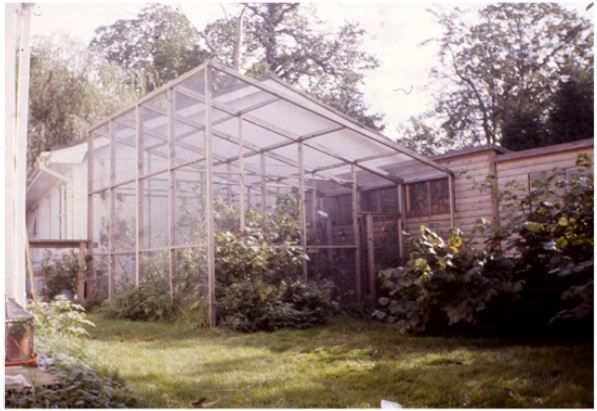Windsor Safari Park
Hazel dormice have always been secretive creatures. Not much was known about them until Dr Pat Morris and Dr Paul Bright began studying the species in the wild to learn more about their habits. It quickly became clear that the species wasn’t doing well.
As part of wider conservation plans, a new breeding unit was designed and built for dormice at Windsor Safari Park in 1988. The unit consisted of two large wooden sheds joined end to end, with eight separate compartments able to house eight groups of dormice. Running the length of the unit was a viewing corridor, fitted with infra-red lights to light the compartments. This allowed us to watch and study the dormice very closely without disturbing them. We spent two or three nights a week from April to November, closely studying their behaviour.
Initial observations
Our findings were very interesting. Hazel dormice appear to feed alone throughout much of the summer. When one is feeding, if another animal approaches, one will run away. However, in the autumn, when dormice began fattening up for hibernation, two or more animals were seen feeding together.
Although we weren’t able to see dormice building nests, we did watch them gathering nest material. On one occasion, we watched as a dormouse stripped bark from a honeysuckle branch. Holding a small piece of bark between its teeth, its front paws pushed against the branch, the dormouse jerked its head back several times as the bark, which is soft and pliable, was pulled away. Once the bark was free, the dormouse carried it in its mouth, some trailing behind, back to its nest box.
Unprecedented access
Another interesting behaviour we were able to see was pre-mating chasing. This happened constantly over the course of three consecutive nights, before the animals settled down to their normal behaviour of self-grooming and exploring the plants. In some enclosures the chasing would being again ten days later. In other enclosures, where the female had become pregnant, she would remain in her nest box for one or two nights, usually about thirty days after mating. The viewing corridor enabled us to be so close to the animals, that when the female ran onto the wire, it was possible to notice if she was suckling young. Thirty days after the mothers gave birth, we’d see the youngsters would emerge from their nest boxes.
The breeding unit gave us unprecedented access into the lives of hazel dormice, enabling us to learn so much about them. When Windsor Safari Park closed the dormice and enclosures went to Burnham Beeches as part of the Common Dormice Captive Breeders Group (CDCBG). The CDCBG is responsible for providing all the dormice which are released annually by PTES as part of the reintroduction programme in England. It’s great to reflect on the contribution this early work has had to the conservation of hazel dormice in the UK.
Written by Dot Eaton
Discover more about the National Dormouse Reintroduction Programme:
Main image by Pat Morris

